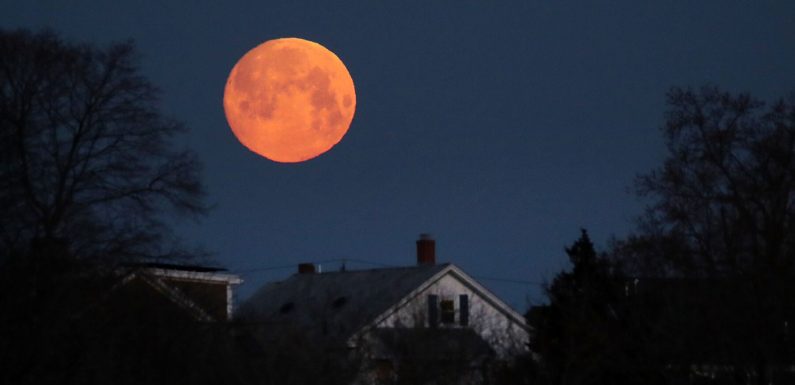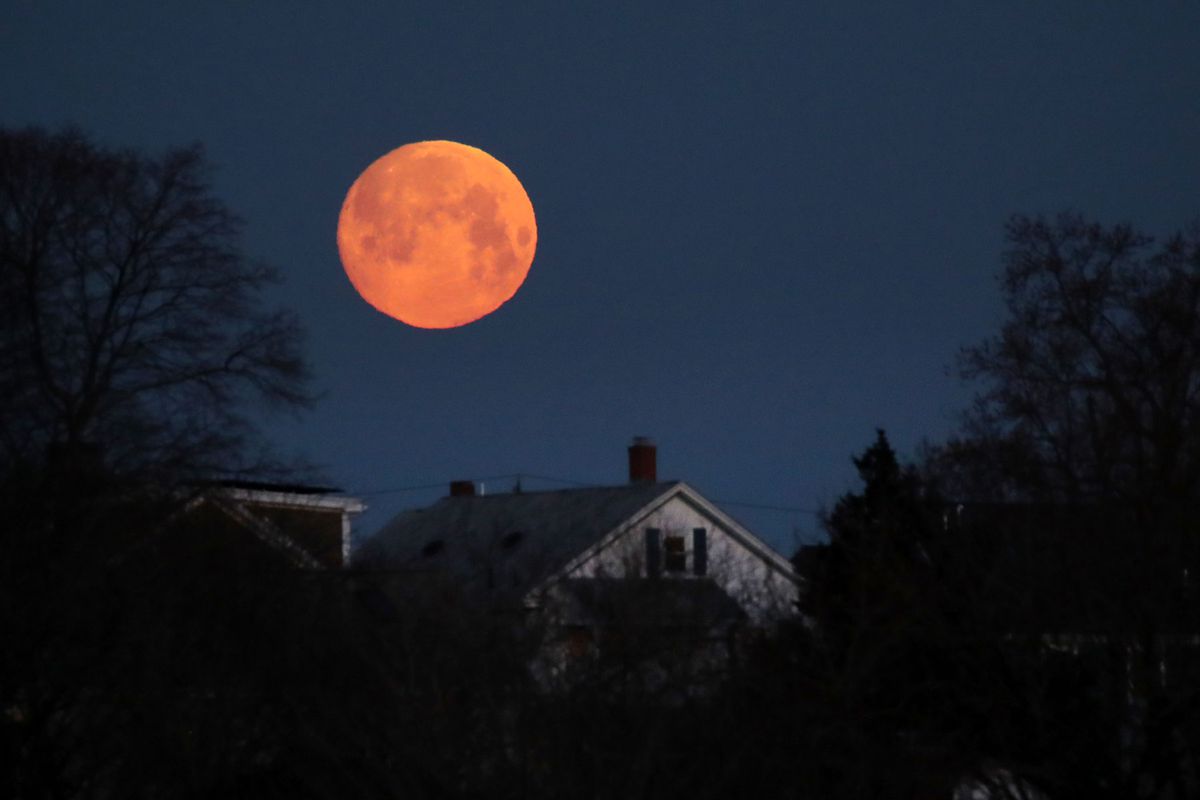
Taken at face value, the name "Super Worm Moon" doesn't conjure up the most appealing image. But don't worry — the moon is not super wormy. It's simply the third full moon of the year, and it happens to be an exceptionally bright one. Here's everything you need to know about 2021's Super Worm Moon.
When is the Worm Moon?
In 2021, the Worm Moon occurs on Sunday, March 28, at 2:48 p.m. EDT. But it doesn't rise on the East Coast till roughly 7 p.m. that night — and that's when you'll want to take a look. (The moon looks biggest when it's low on the horizon, right after it rises and just before it sets.) Watch it traverse the sky until roughly 7 a.m. EDT, when it slips back below the horizon.
Why is it called the Worm Moon?
The Old Farmer's Almanac assigns nicknames to each of the year's full moons, drawing from Native American traditions in which full moons were named after specific markers, such as the weather or animal behaviors. In the case of March, the full moon is known as the Worm Moon, as the ground usually begins to thaw with the arrival of spring, and earthworms come out.
But since different Native American peoples had varying names for the full moons, the Almanac also offers some alternatives. For example, the Worm Moon is also known as the Crow Moon (crows are believed to caw at the end of winter), the Crust Moon (snow melts during the day and freezes at night, creating a hard crust), and the Sap or Sugar Moon (it's maple tapping season!).
What is a Super Worm Moon?
In 1970, astrologer Richard Nolle came up with the term "supermoon," which he defined as a moon that's within 90% of perigee, or the closest point it gets to Earth in a given orbit. Now, this isn't a universally accepted term among the astronomy crowd (astrology is, after all, a pseudoscience), in part because there's no known reason that Nolle picked 90% as the cutoff. So, given that he was fairly vague about the qualifications of a supermoon, different people have different definitions.
What we can say for sure, though, is that 2021's Worm Moon will be the fourth closest full moon of the year, which also makes it the fourth biggest and brightest. (Supermoons are usually about 14% bigger and 30% brighter than the year's smallest full moon, known as the micro moon.) Does that qualify it as a supermoon? Well, the jury's out on that one.
When is the next full moon?
Next up is the Pink Moon on April 26, and it is also considered a supermoon. (May and June have supermoons this year, too.)
Source: Read Full Article










